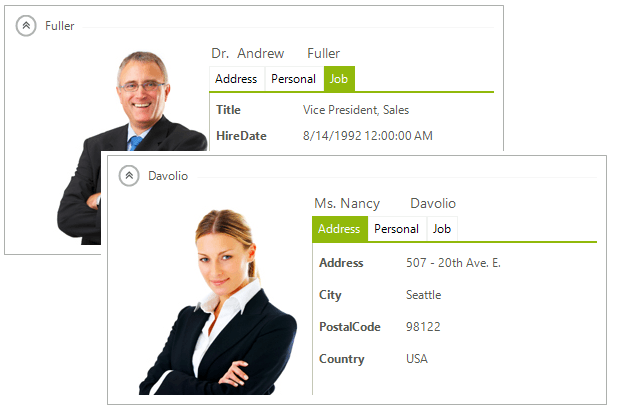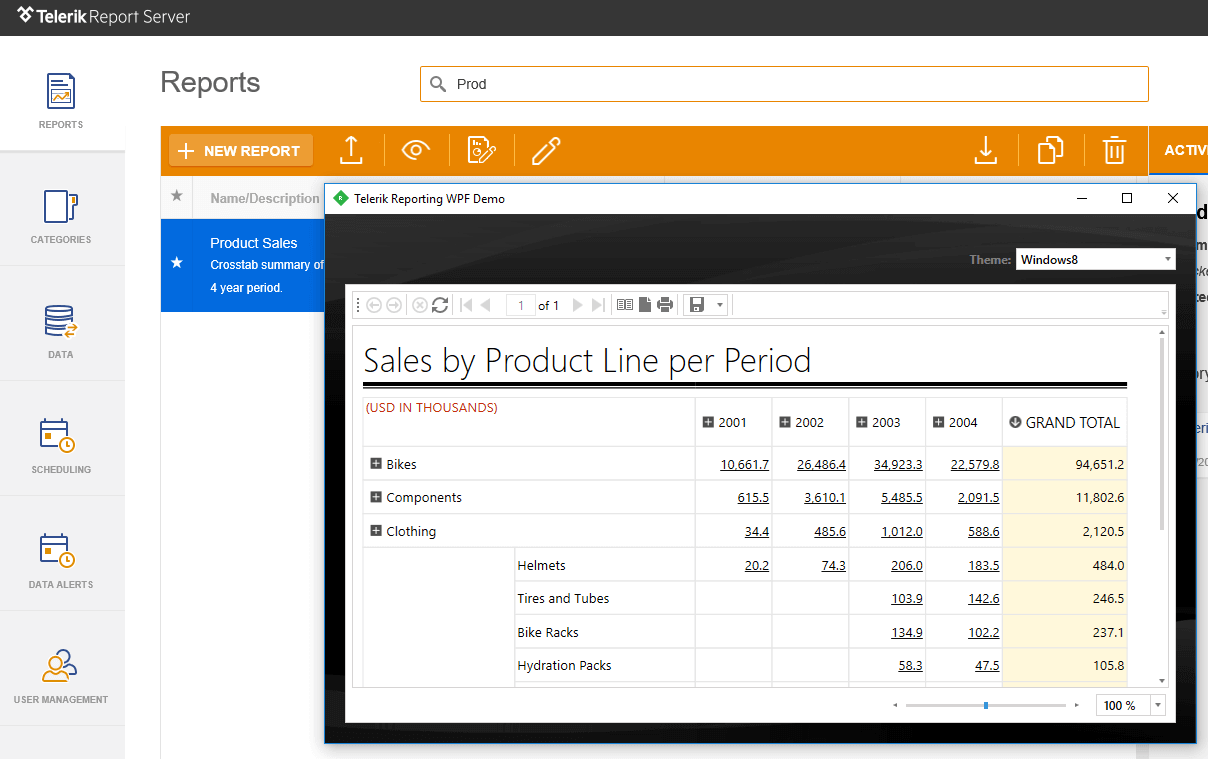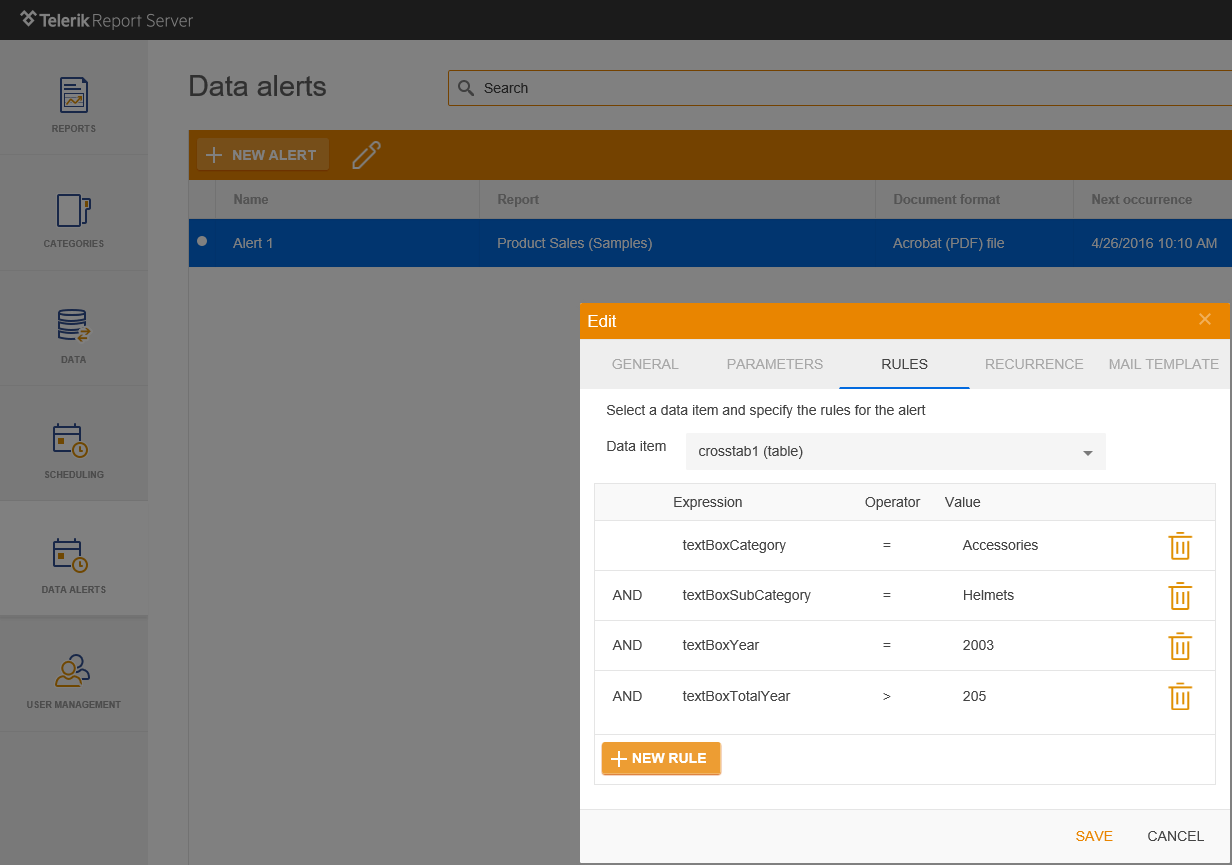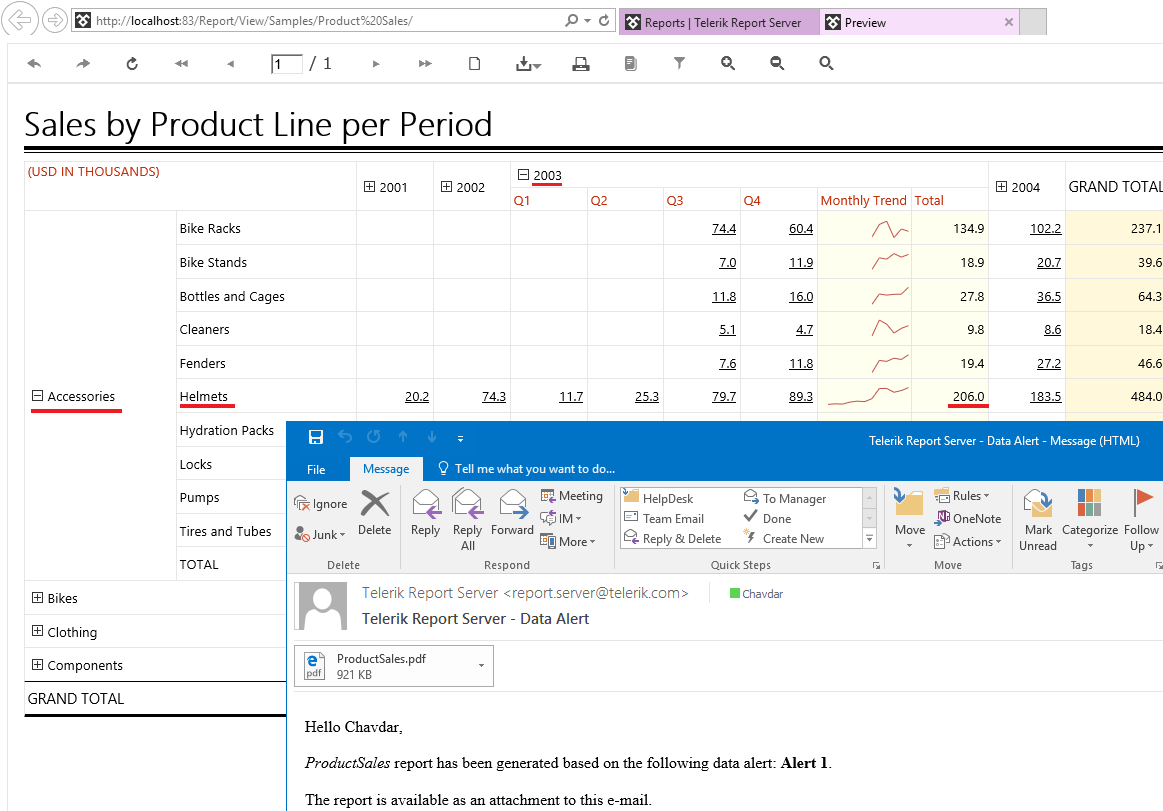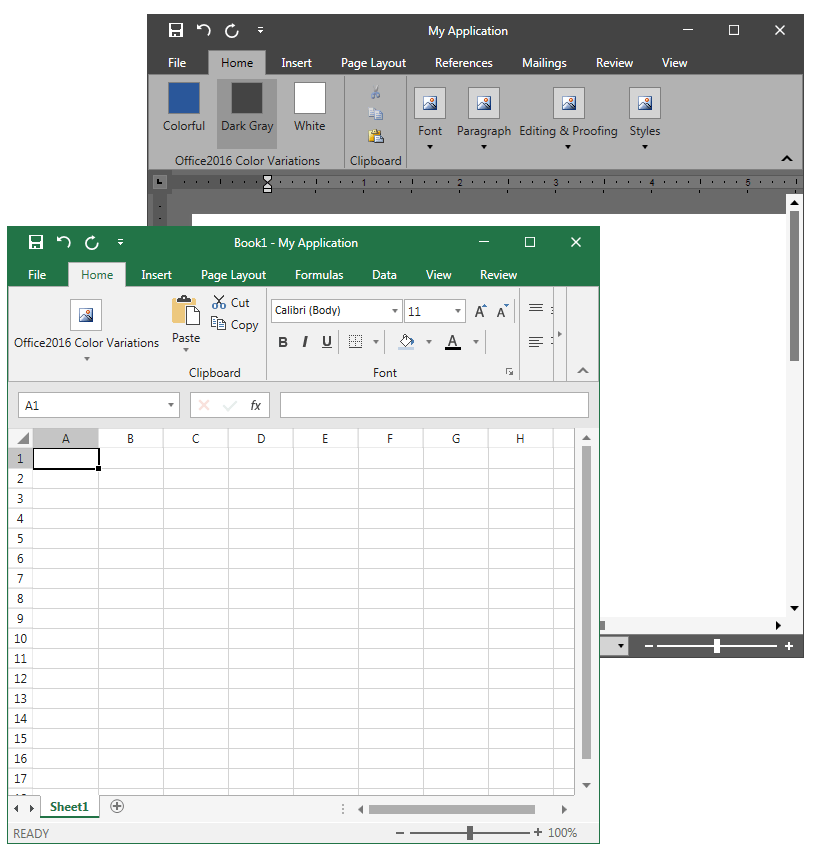Learn what's new in the latest DevCraft release, as we answer all your questions from our release webinar.
Earlier this week, we hosted a series of webinars that highlighted everything new in the Telerik DevCraft R2 2016 release. My co-hosts (Sam Basu and Ed Charbeneau) and I had a great time showing you the latest features in this release and answering your questions. I’d like to thank everyone who was able to attend. Taking time out of your busy schedule isn’t easy so we really appreciate it. As promised, these webinars were recorded and a summary video has been posted to our YouTube channel.
tl/dr: What’s New
I’d recommend reading what’s new in Telerik DevCraft R2 2016 to get a summary of the latest features we’ve implemented. We’ve also published detailed blog posts on each product:
If you missed it or just want to watch it again, you can also catch a replay of the webinar below:
Prize Winners
Historically, we’ve given away prizes to the best question that’s asked during the webinar. This time is no different. The biggest problem we have is trying to find prizes that are cool enough for developers! This time around, I think we did pretty well: ICEORB levitating speakers for two random attendees and Myo gesture armbands for the two best questions.
- The winners of the ICEORB levitating speakers are Matthew Empringham and John Molt
- The winners of the Myo gesture armbands are Oscar Lito Pablo and Arun Singh for their great questions
Your Questions
Ok, let's get to your DevCraft questions. We had many excellent questions come in, and below we answer all of them.
Kendo UI
Do you have backward compatiblity for Angular 1.X with the latest Telerik release?
This support exists today. If new features become available that we can leverage, we’ll definitely try to! :)
Kendo UI with Angular 2: The first components you mentioned will be June-July. Does that mean it will be feature complete by Q1 2017? Or can we expect intermediate updates?
We plan to push a lot of updates to GitHub. This work is ongoing. It’s hard to predict when all of these components will ship since Angular 2 is still under development. :) However, we are working very hard on this.
With your Angular 2 components, will we have access to the “early bits”?
Yes, these will be made available on GitHub. You can track our progress by watching repositories prefixed with “kendo-angular.”
It would be nice if we were able to use the Kendo UI widgets seamlessly with NativeScript. Or, is that now doable?
Well, there’s no DOM in NativeScript so that’s a non-starter to begin with. You may want to check out Telerik UI for NativeScript if you require widgets beyond the ones that ship with NativeScript.
Ah, so we can’t use WebView in NativeScript to use DOM-based widgets?
Oh, you can definitely do that. My point was that you can’t use Kendo UI widgets without FIRST integrating a webview via NativeScript. This done through the web-view module.
Using Kendo UI in NativeScript via WebView is probably something that can be documented in both the Kendo UI and NativeScript official documentation, so we’ll know how to do it correctly, right?
Well, there’s not much to document. The WebView is just a container. From there, you’d use Kendo UI the same way you’d use it elsewhere. It’s not a recommended path since we’re trying to target native controls through NativeScript.
I wish you would implement multi-row drag-and-drop in the Grid widget. It’s a feature that clients ask for and I had to use another UI framework because Kendo UI doesn’t provide it.
Please submit your feature request on the Kendo UI feedback portal. We’ll definitely look at it.
We are using an older version of your components in our web application. What are the options I have to convert the application to a mobile app. Does Kendo UI help without major changes?
Yes, Kendo UI can make responsive web apps that work on Mobile. Alternatively, you can use the Telerik Platform and Apache Cordova to bundle those apps as hybrid apps.
Yes, I realize it’s tough. However, virtual scrolling is less disruptive (more fluid) to the user. I’m hoping you can make it so that when a model gets dirty (due to a keystroke), the model gets added to a queue that protects the model from getting recycled until the modified data gets saved to the database. Reach out if you wish to discuss more. Thank you.
You may want to consider a custom implementation that tracks changes outside the scope of the DataSource. Then, once you’re ready to commit them, push those changes back into the DataSource and perform a one-time update.
Is the Spreadsheet widget available for the React implementation for Kendo UI?
Not at the moment, no.
What is the reasoning behind React? What made the creators of React come up with it and what do they think will make a developer adopt React or even be interested in React?
I’d recommend reading the article entitled, Why React? written by the engineering team who built it.
What is the advantage of using React vs jQuery?
They are difficult to compare. I’d recommend reading about React to better understand what it’s all about.
What do I get from React that I don’t have already on other frameworks such as jQuery?
React isn’t better than jQuery. It’s a different approach. There are numerous articles online that compare the two.
What is Markdown? I’m not familiar with it.
It’s a lightweight markup language. There’s a good description of it up on Wikipedia.
Does the editor support RTF that is like in Wordpad not HTML?
Not out-of-the-box. However, the new serialization APIs would allow you to do this.
Can you give one simple example of Markdown support?
We have published an example of supporting Markdown in the documentation for Kendo UI.
Is there a friendly way to use tools like Bower for Kendo UI? I’ve followed the instructions on the website and it’s not always clear.
Aside from Bower’s website, I’d recommend reviewing our documentation about using Bower with Kendo UI.
Are there plans for Sharepoint 2013–2016?
Not explicitly at the moment. That stated, you can definitely target SharePoint with Kendo UI and the SharePoint REST API. The Office 365 theme looks great.
Does the Spreadsheet control support Excel workbook with macros?
The Spreadsheet control doesn’t support macros in the exact same way at Excel if that’s what you’re asking. Instead, you can defer to JavaScript. We provide hooks to do this.
For Spreadsheet, do you have column like entry? For example, I want to enter multiple years of tax entries vertically in columns and be able to keep on adding new columns as new years.
No, but please consider submitting this as a feature request on the Kendo UI feedback portal.
According to one of your engineers, enabling editing with virtual scrolling in your grid is not recommended and you should consider using paging instead. Are you working to fix this?
We have guidance to do this. It’s not optimal because it’s a tough problem. If you have a big amount of data and want to give the users the editing functionality then you can use virtual scrolling + popup editing, or in-cell editing and paging.
Are you on track to deliver Angular 2.0 Kendo UI compatibiliity by January 2017?
We are on-track for our Angular 2 component work for Kendo UI. You can keep an eye on our progress on GitHub through the kendo-angular query.
Regarding Angular 2.0 support: Will we get a preview version by June-July prior to its release?
Our expectation is to have more bits available on GitHub very soon. We’re already publishing there.
Does the Kendo UI Editor have a Markdown-to-HTML converter?
Not built-in. However, many JavaScript libraries exist to do this. We provide serialization hooks for this.
Does the Report tool support Markdown that comes from the Kendo UI Editor?
I’m not sure if I follow you. There’s no report tool that comes from the Kendo UI Editor.
With the rapid pace of changes in web development tools, such as .NET Core, React, and Angular 2.0, where do you see web development for the .NET developer over the next 2–3 years? What plans are being made at Telerik to accomodate this vision?
Yes, you’re right; things move fast on the web. We will always strive to provide the best possible UI controls and framework pieces. And we do want to allow you to pick your tech stack and be able to use Telerik suites seamlessly. Our goal is to provide the best UI controls on the planet for web, mobile, and desktop apps. This includes .NET-based development targets like UWP, WPF, Xamarin, and others. It’s hard to predict where things will be in 2–3 years. However, we’re confident that we’ll have the best controls out there to support developers building the “Next Big Thing.”
The scaffolding for Kendo UI and Telerik UI for MVC is pretty cool. What is in the upcoming roadmap for additional scaffolding?
We haven’t published anything yet since we just published the R2 release. However, we’ll be posting something soon.
Is the front-end print feature available in the Kendo UI Grid or just the web forms RadGrid? If not, can you explain the difference between these two grids and why they are developed in parallel? Thanks!
Kendo UI has built-in exporting features for many controls. It also has an API for exporting anything on the screen—even standard HTML elements. You can see a webinar all about exporting with Kendo UI on our YouTube page. 2) Many of the controls in AJAX are powered by Kendo UI.
Can you discuss any updates on progress with native Angular 2 components? Specifically, what controls will be included in the initial release and what is the expected release date? Lastly, will a beta preview be available to get an early start?
Keep a close eye on the kendo-angular query on GitHub. You’ll see new repos become available soon. No release dates at the moment, but we’ll definitely have components very soon.
Does Kendo UI now support Material Design that’s consistent with the Google Material Design specs?
We’re always improving it. For example, the R2 2016 release notes cite two fixes.
Will the MVVM framework in Kendo UI continue to be developed?
Yes, we’ll continue to work on it.
Is there a followup webinar on using Kendo UI for React?
Yes, we plan to have a webinar on Kendo UI in June.
Are there presentation materials on using Kendo UI ?
Yes! You can find them in the community section of the Telerik Developer Network.
Will Kendo UI using React affect other libraries already using React?
No, they shouldn’t.
How does React utilize the virtual DOM and the unidirection on data flow for two-way data binding handle security concerns?
I’m not sure how this applies. The virtual DOM and unidirectional data model is there to utilize. It’s not something you’ll directly expose to users. As always, validate any and all input!
Do you have print button feature available for Kendo UI grid for Angular 1.X ?
We have an article in our documentation that covers this.
From the initial testing of porting Kendo UI widgets to React and Angular 2 components, is it expected that the native Kendo UI components will be more performant than the jQuery-based implementations?
We haven’t conducted any perf tests yet.
Are there plans to update Kendo UI to support the latest versions of jQuery?
We just updated the dependency list to include 1.12.3.
Kendo UI with Angular 2: Thanks, great to hear you’re not sticking to the 3x a year release cycle, and that we can start using it with Kendo UI as things progress instead of waiting 3 months :)
We’ll ship components out-of-band on GitHub and roll them up into a release on a quarterly basis. If you want early access, keep an eye on our work up on GitHub.
Telerik UI for Xamarin
Any chance the Telerik Xamarin ListView has touch and hold to reorder items in the ListView control?
Great suggestion. Please submit this as a feature request to the feedback portal for Telerik UI for Xamarin. I’m sure our engineering would love to consider it.
Will UI for Xamarin.iOS work on Xamarin Studio as well?
Yes.
Is Xamarin included in MSDN Subscriptions yet?
I believe so. If not, should be happening very soon.
When you showed controls for Xamarin Forms, are they available for Xamarin without forms?
Yes, all the controls are available for Xamarin.iOS and Xamarin.Android.
Telerik UI for ASP.NET MVC and Telerik UI for ASP.NET AJAX
Does the TreeView have to use a DbContext or can it use an ADO.NET DataTable?
The TreeView can connect to many data sources but the scaffolding tool needs Entity Framework to operate.
Is formatting for cells preserved when importing an Excel file into the Spreadsheet?
Yes, formatting is preserved.
Your ASP.NET samples do not show truly MVC Styles demo, e.g. TreeView Control needs datasource and should be coming from Controller but we do all those in View itself. Honestly they do not address real-time scenarios of MVC. Please if you can address my concern? I like the way you have just shown the Treeview Control. Thanks!
Please check out our (new) quick start tutorial for Telerik UI for ASP.NET MVC to see how this works.
What would a circumstance be to use the enable/disable column feature? I would like to introduce this feature to my users but I’m not sure what the purpose would be for this feature.
This is to protect fields by making them read-only.
With the Spreadsheet for Telerik UI for ASP.NET AJAX, can you do all the functionality shown today via server-side vs front-end code?
These were front-end demos.
When you import an Excel file to the grid, do the formulas come in as well?
Yes! :)
Will the ASP.NET AJAX Spreadsheet tool support hierarchies/groups?
The spreadsheet does support merged cells/columns.
Does the Telerik UI for ASP.NET AJAX RadSpreadsheet control allow the user to copy and paste an Excel spreadsheet into the control?
Yes, You can copy and paste from Excel to the Spreadsheet in Telerik UI for ASP.NET AJAX.
Does the Schedule control in Telerik UI for ASP.NET MVC support a timezone set via a dropdown on the page?
The Schedule control is pretty flexible and it sounds possible but I’d ask our support team; they may have an example to get you going.
How you can use Markdown in the Editor for Telerik UI for ASP.NET MVC?
You’ll have to do this either front-end through the serialization APIs that we showed during the demo, or you’ll have to write the code yourself if serializing on the server side.
If I need to print only specfic controls from a page which contain data/records, does the new print option have that facility? Or do I need to use per grid single print option?
Yes, this can be done. However, you would have to write JavaScript on the front-end to control that.
Since you showed tag helpers from Microsoft as well, does this mean that Razor syntax is going away?
Razor is not going anywhere. TagHelpers are a new addition to Razor. Razor may also have a bigger role in .NET in the future, possibly replacing other technologies like XSLT.
So Razor and TagHelpers can be used interchangeably it appears? How long before all of Kendo UI is available in TagHelper?
Yes, both can co-exist. The TagHelpers demoed are available today.
Why should I use TagHelper if I already use Razor?
Both have advantages and disadvantages. TagHelpers appear more like HTML and are easier to nest elements inside of. Razor can have a fluent API, which many people enjoy using.
How do you share data from backend using tag helpers?
TagHelpers can pull from your model just as HTML Helpers can.
Will you offer any tool to convert from Razor to TagHelper?
This is not on our roadmap at this time. But, you should find the APIs very similar.
Is it necessary to use the .NET Core 1.0 to have this working?
TagHelpers are only available in ASP.NET Core.
Can we have a Telerik radio button control in which we can change the color of the button on change or based on page validation, we can change the color. I was finding some problems in the past so I used a normal HTML input radio control with label and CSS to do the same thing.
This question would be best answered by our support team. Please feel free to submit a ticket, they are excellent!
With ASP.NET Core 1.0 scheduled to hit version 1 in late June, will your MVC controls be ready at that time and be fully supported with it?
Our Razor HTML helpers are already compatible with .NET Core (even on Mac and Linux). TagHelpers are being added as we complete them, several are ready now and being shown it the demo.
Can I use single print option for multiple Telerik controls in a single page?
Your browser has that built-in, no? I’m not sure what you’re asking for here.
ASP.NET AJAX: What is the point of printing the Grid as it is displayed on the screen? Printing the data in the Grid, including all rows/pages is what users want.
We also receive suggestions where users would like to customize the view and print WYSIWYG. You can tie into events to include items for your own scenarios.
When printing from the Grid in ASP.NET AJAX, is there functionality to customize the printout? For example, I want to add a confidentiality message to the bottom of each printed page.
You should be able to use front-end events to manipulate the view before it is printed.
With the new Grid print button—is it possible to print all rows within the grid, not just the rows that are displayed on the current page (if the grid is paged)?
Yes, you would need to toggle those items into view when the event is triggered.
What is the best way according to you to learn using Telerik controls for MVC development for web and mobile. There are way too many help options online, and it's difficult to pick and chose. We end up looking at all of them.
We have a brand new quick start guide. Look for it in our docs under Tutorials. It's about to be shown in the video.
Do you have any examples of the Spreadsheet used in an Aurelia application?
Not at the moment. However, check out Rob Eisenberg’s article entitled, “Aurelia and Kendo UI” to read how it’s done.
When will we have full feature coverage for ASP.NET Core 1.0?
Microsoft has a lot of churn with APIs in .NET Core right now. However, we are supporting it in its current state. We have a roadmap for Telerik UI for ASP.NET MVC available. Plus, we will have some new demos in today’s webinar.
I was working with TreeView and I needed to show 30,000 nodes. The page would freeze, and showed nothing, like it can not handle that amount. Is there a limit for nodes to show? I ended using the Grid with sub-Grid controls.
30,000 nodes is a lot for a TreeView. You may want to consider applying a lazy-loading approach through a HierarchicalDataSource.
With the ASP.NET AJAX Spreadsheet, are you able to link it to data coming from a database?
This is supported two ways: either via proxy back to your server or through the front-end via JavaScript. In either case, we support populating the Spreadsheet with data coming from these locations. However, you are required to write the code that does this; we don’t do this auto-magically for you.
Does the TreeView support drag and drop?
Yes.
With the Grid Print, in the demo it is printing just the current view (i.e. current page). Is it able to print the whole grid?
It’s best to export as a PDF in that instance, which is something we support.
Can the grid read data from a nosql db like Azure DocumentDb?
We don’t provide any provider-specific integration points out of the box. Instead, we support integrating data from remote locations in the form of XML, JSON… along with OData and JSON-P. To pull in data from Azure DocumentDb, you’d have to interface via HTTP(S).
Telerik UI for Silverlight
Any plans to migrate Silverlight controls to HTML5?
No.
Is Telerik going to stop support for Silverlight?
No, we continue to support UI for Silverlight.
With Silverlight going away, does Telerik have any plans for alternative desktop cross-platform solutions that are not web-based?
There aren’t many solutions for desktop that are cross-platform that AREN’T web-based as the moment. That stated, Electron 1.0 just shipped and you can use Kendo UI with it to build out apps.
Does the app converter overwrite existing code or make a ‘new’ Telerik app or should you back up the code before converting?
It doesn’t backup your project beforehand so do make sure to backup before running the tool.
If Microsoft is not continuing to grow WinForms, what environment do they recommend to program in besides web languages? WPF or something else?
Well, they are promoting UWP for Windows 10. So, that's where you’ll apply your XAML skills.
What are the requirements for the Conversion Tool?
Currently, it requires Visual Studio 2015 Update 2.
Does the Conversion Tool convert the whole project? Or, one form at a time?
The Conversion Tool will convert your entire project in one operation.
How does the Windows Forms Converter handle other third party controls?
Currently, we convert a subset of controls from System.Forms.
Telerik UI for WPF and Telerik UI for UWP
Will these controls behave in the same fashion as your Silverlight UI controls? (The user experience)
We try our best to preserve the UX across each of the platforms we support. However, it’s never a one-to-one UX experience.
To what extent can we expect the existing XAML controls (WPF/SL) to be migrated over to UWP? Xamarin?
I think they are going to be separate for a while and we’ll keep investing towards both desktop and mobile platforms. XAML tooling improvements benefit all stacks.
Do you have an opinion as to the best way to take a WPF application to UWP on a migration path?
Great question. Let me expand on this during Q/A.
Checked the app store, still no UWP Telerik Examples yet?
We ship our examples on your account page at telerik.com. When you follow the “Browse all product files” link under the Windows Universal product, at the bottom, under Demos and Sample Application, you will find a download link for XAML Dashboard. You can also find the Telerik Controls Examples source code in your UI for Windows Universal installation folder. When you use the automatic installer, apart from the actual controls installation, you also get the examples solution. You will find a shortcut to the solution on your Desktop and the actual project in ~\Telerik\UI for Windows Universal QX 201X\Demos.
Miscellaneous
It has been a while since we have seen any updates to Data Access with any of the Dev Craft releases. Are there any future plans for Data Access?
We published the latest release a couple of months ago.
I think I heard that all of this is available for download now from the Telerik Control Panel?
That’s correct. All of the bits are available to download now through the Telerik Control Panel or through your account on telerik.com.
Wow! How do I get my copy of DevCraft Complete?
Start by visiting the Telerik DevCraft page on our website.
What updates are being made to the Testing Framework?
We don’t publish a roadmap for our testing framework. FWIW, our roadmap for Test Studio is available.
Dose Telerik have some kind of Android simulator for apps developed using Telerik controls.
Yes, you can use Telerik AppBuilder for this.
Is there somewhere suggested addons (such as the ones mentioned Gulp, Github, etc.) are listed with descriptions of what they might be used with and how they would be useful?
I’d recommend the article entitled, “The Hitchhiker’s Guide to Modern JavaScript Tooling” by Marcin Grzywaczewski.
It’s nice to support all those technologies. But where is the guiding advice when to use what? Xamarin, NativeScript, Angular, ASP.NET MVC, Kendo UI, UWP, you name it. When would Igo down which road?
Each of these technologies target different platforms. You’ll have to consider your requirements when looking at what approach to take.
Do you have plans on supporting React Native at one point?
Not at the moment. Instead, we like NativeScript.
Thank You!
Thank you to those who attended the webinar and who asked questions after. As always, if you have a suggestion feel free to leave it in the comments here or on our feedback portal.
 The left image shows a Form with standard controls, right image shows the result of the conversion
The left image shows a Form with standard controls, right image shows the result of the conversion



